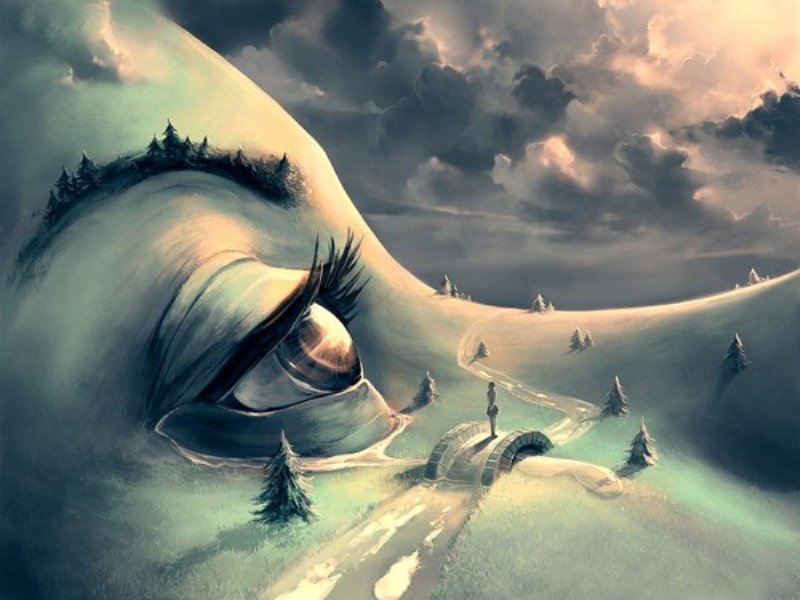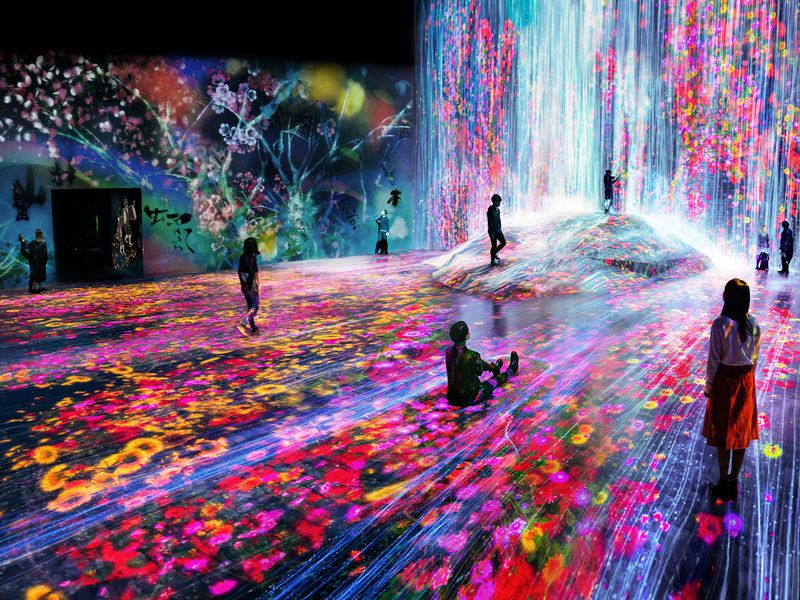Digital Art

Today, more than ever, works of art are authentic multi-sensorial experiences that combine the talent of their creators with the most advanced technological resources. We have entered the artist’s workshop to analyse the main trends in this field.
The instruments of the digital artist
New artistic practices do not arise in isolation from their context. On the contrary, they emerge from a new culture that involves methods, procedures and technological resources to achieve aesthetic communication. These tools offer opportunities for unusual forms of artistic expression, as well as leading to new habits of creation and cultural consumption.
For its part, the popularization of intelligent devices of last generation, both mobile and desktop, have put at the hands of amateurs and professionals a diversity of resources for communication and content creation.
There are paid and free services associated with these devices that allow the capture, creation, editing, format conversion and publication of images, audio and video, among many other digital content management options.
The universe of digital resources or media available to the artist includes devices, applications, platforms and associated services, such as:
- Devices: these are devices or mechanisms that perform specific functions, for example a smartphone, a webcam, a graphics tablet, a scanner, a digital pen or a 3D printer, among others.
- Applications: These are programs for specific tasks, such as image, audio or video editing, the creation of 2D and 3D objects, file compression and decompression, among others.
- Platforms: are digital scenarios or operating systems that integrate computer equipment, programs and operating system.
- Services: they are available to host content, send messages and files, collaborate in networks, have image libraries and typographic fonts, among others.
Given the amount and diversity of resources offered by technology, it is necessary to consider that what is fundamental in digital art is not the computer aspects or the format in which one works, but the concept behind each work. The intellect, talent and human sensitivity is what gives personality and discourse to each artistic creation.
Digital Art Categories
Digital resources and, in general, computer devices can be used by any artist, even in fields other than the plastic arts such as music, poetry and narrative. Because of this diversity, there is no standard for their categorization, as they continue to develop, rapidly, at the pace of technological advances and the creativity that they foster.
According to the way a digital work is received or perceived, and according to the intention of the artist, a digital creation can be:
- Passive: a digital work that is exclusively expressive and whose message expects to arrive without the intervention of a third party in the work/author/viewer relationship.
- Interactive: digital work that invites action by one or more people who go from being spectators to being users.
- Participatory: digital work that requires the intervention of one or more people who go from being users to being more involved and even part of the work.
In order to organize the works that participate in some meetings and exhibitions on digital art, some categories have been proposed such as:
- Graphic or digital image: image expressed as drawing, painting or artistic photography. It includes those works made in vectorial programs and image editors that can be printed. Some contests admit 3D objects and computer graphics in this category.
- Video art: moving images and 2D and 3D animations. Video art can incorporate techniques such as stop motion and time lapse among others. It generally contains audio.
- Interactive multimedia: it is an artistic creation that needs the participation of the viewer to be shown as the artist intended.
For its part, one of the most important awards in the field of interactive and electronic art, animation, culture and digital music.

Three-dimensional virtual environments in art
They are digital creations that simulate environments in which we perceive visual and sound stimuli that we interpret as distances, dimensions, movements and objects that are not real.
The artist who creates based on immersive environments needs that whoever wishes to appreciate his or her work participate in it with or without devices for that purpose. This turns the work into an interface that propitiates an aesthetic experience which emerges from observation and travel in real time, or from interaction, in which case one has the sensation of manipulating and influencing that environment at will.
- The 3D objects
Constructing 3D objects for three-dimensional virtual environments always requires considering a three-axis system of coordinates: X, Y and Z. That is, its three dimensions: width, height and depth or thickness. In its construction, shape and surface are defined with the help of geometric meshes,
As well as decisions are made about the material it represents, color, texture, relief, transparency, dynamics, gravity simulation, location of the light source and its type, among many other variables that have to do, for example, with the location of the cameras or the observer’s point of view.
- Video game artist
The person in charge of creating the graphic elements of the characters, settings, objects and visual effects that are part of a video game. To this end, he creates digital graphic pieces that respond to the artistic style of the project for which he is working.
The video game artist is professionally trained in conceptual art, animation, 2D and 3D modeling, digital sculpture, graphic narrative and, in general, tries to keep his or her knowledge of the latest generation of software updated to allow them to create their works.
- Augmented Reality (AR) in Art
AR or augmented reality is a system that combines real and computer-generated information in an interactive way and in real time. This system aligns physical objects with virtual objects that can be observed with the help of mobile or desktop devices. AR has been used in art since the early 1990s.
- Virtual Reality (VR) in Art
VR involves the existence of a complex electronic system that generates environments that are perceived in three dimensions, and which is capable of sending and receiving signals from the actions of the person participating in that experience. The creation of 3D environments or “virtual worlds” in which one can interact has achieved applications in education, medicine, marketing, tourism, aviation, robotics, human talent training, architecture, among many others.
- Vjing (“viyin”): real-time visual projection
Vjing consists in the creation and mixing of visual pieces in real time, with the help of technological means and, generally, in front of an audience. The VJing artist, known as a VJ (“viyei”) or visualist, manipulates moving images in synchronization with a soundtrack or other artistic expression, that is, he or she creates live artistic audiovisual narrations with a language analogous to music.